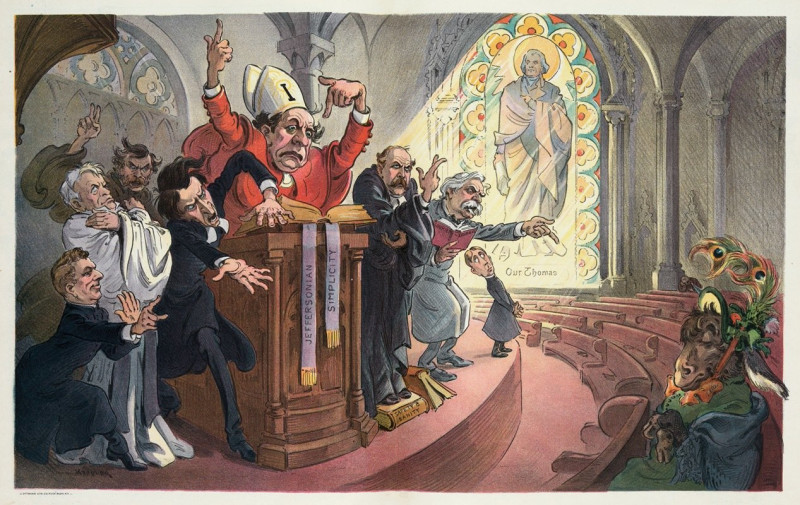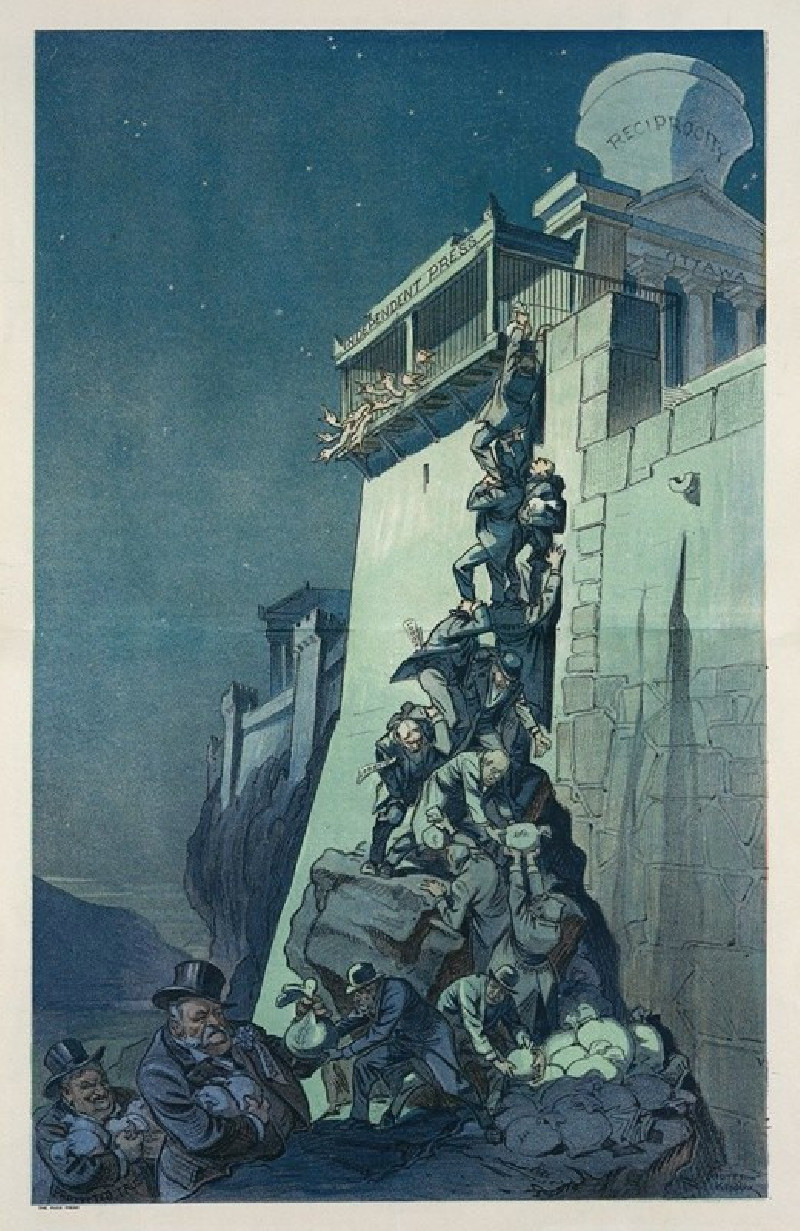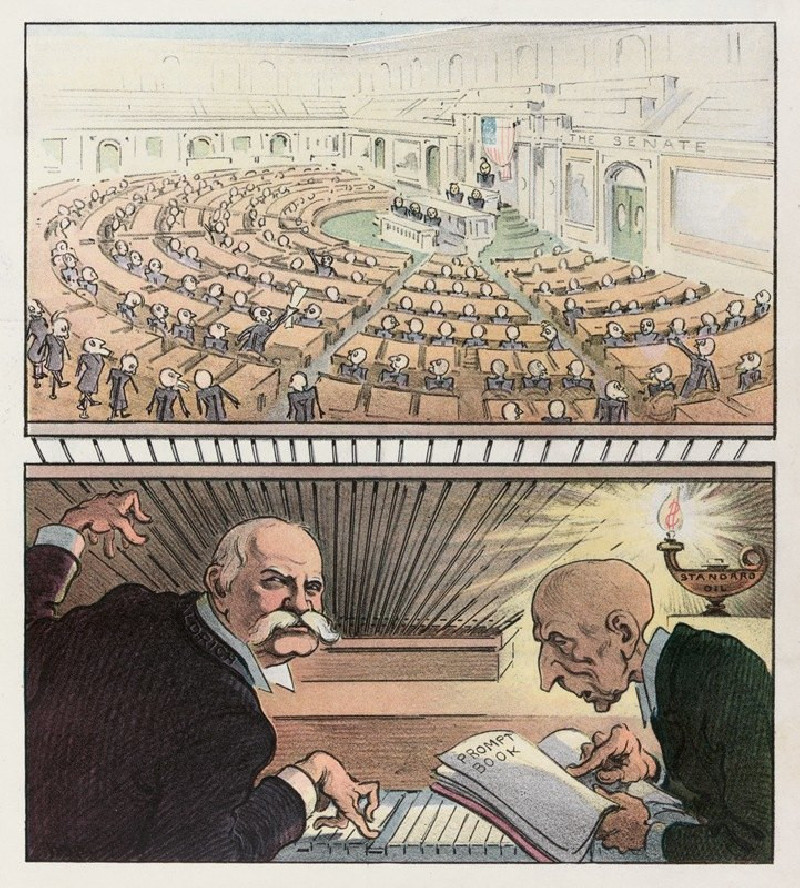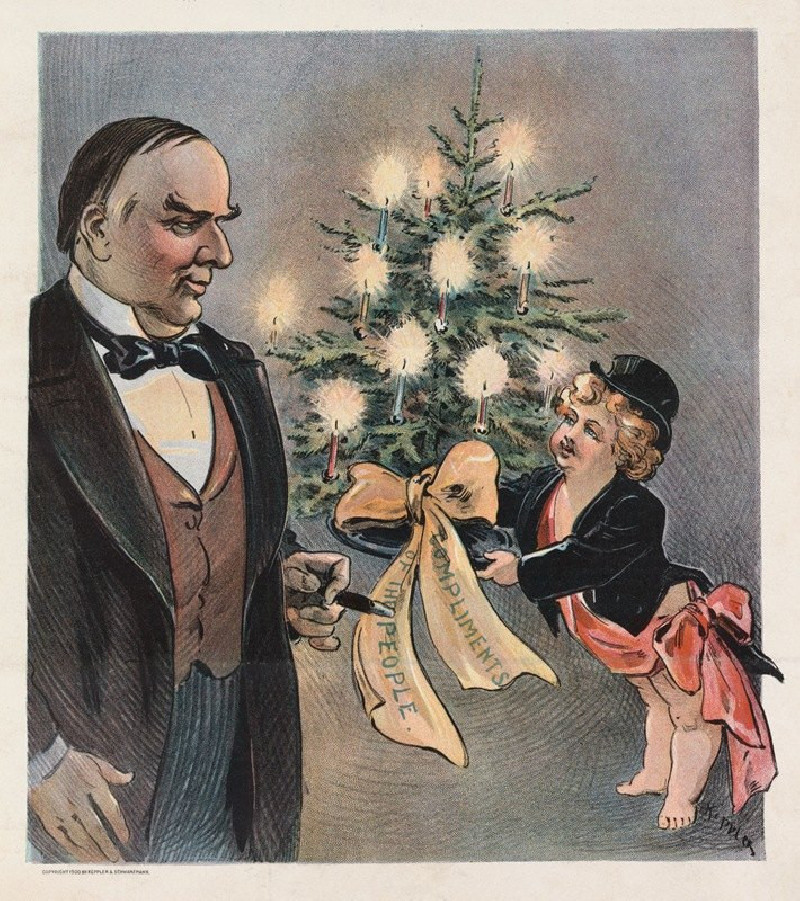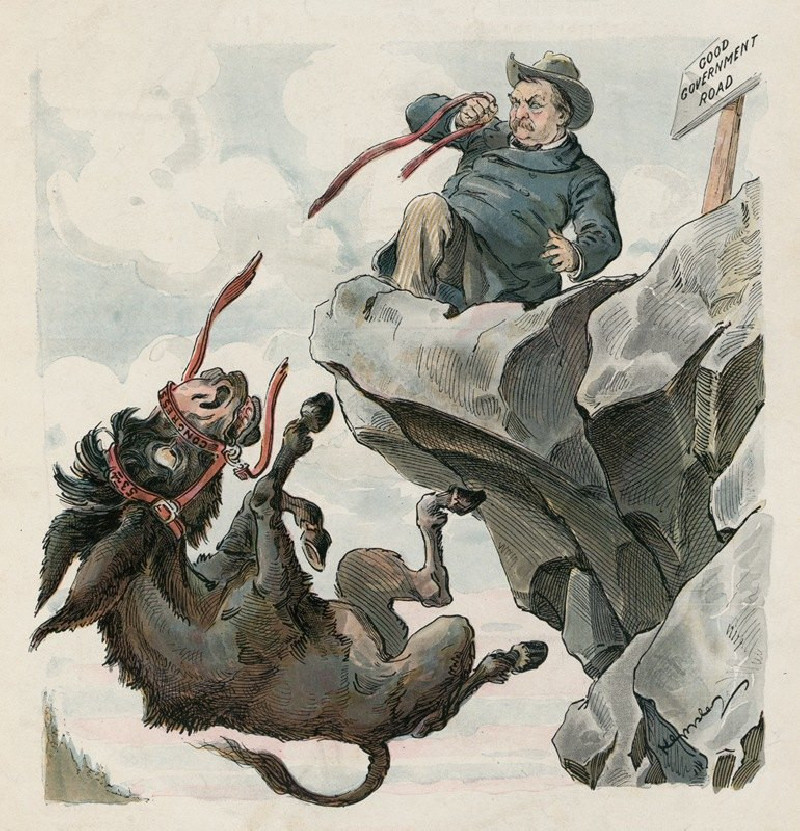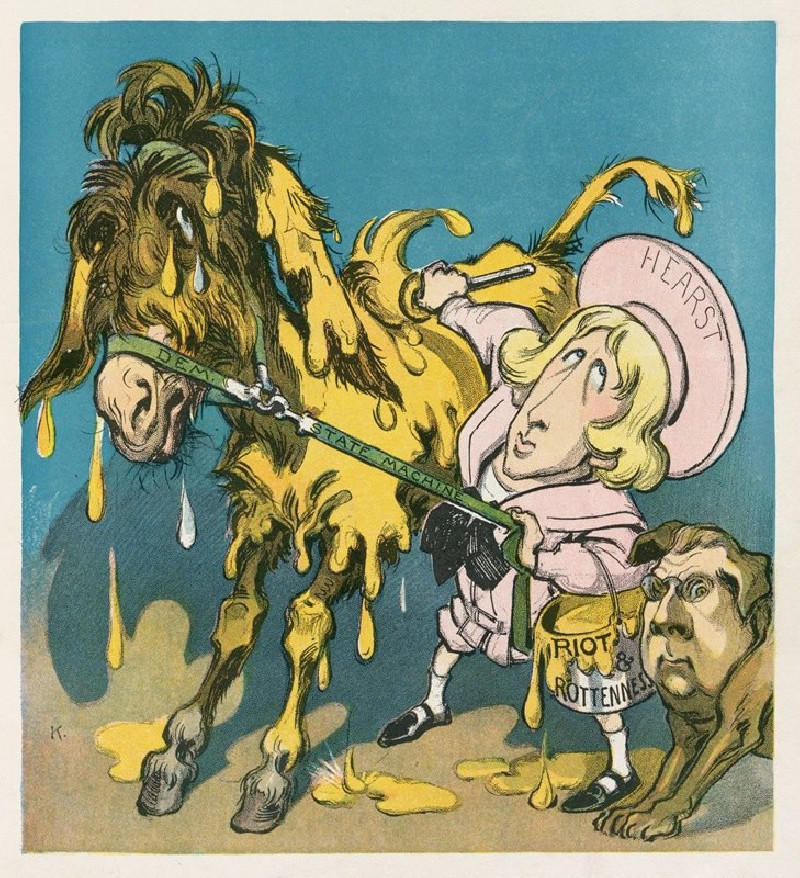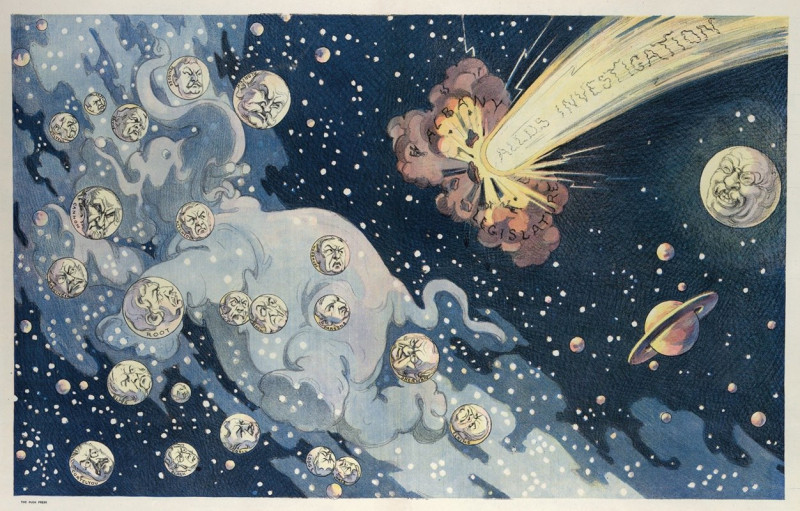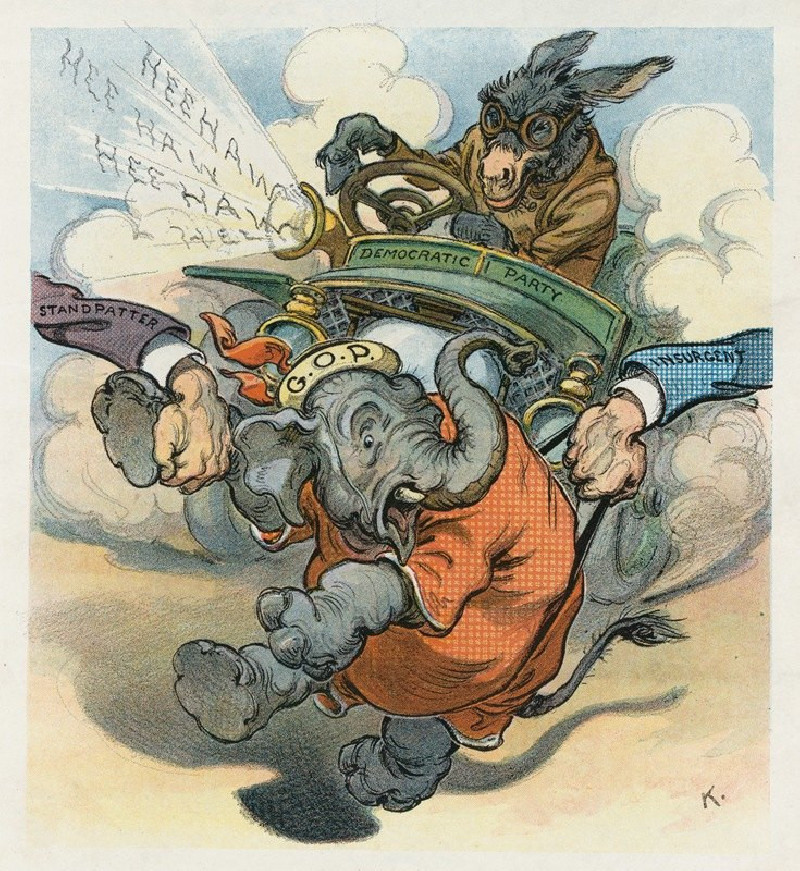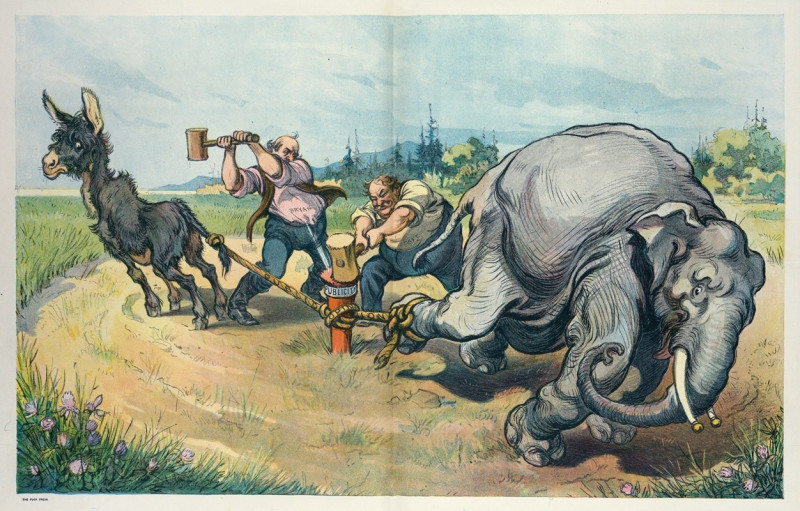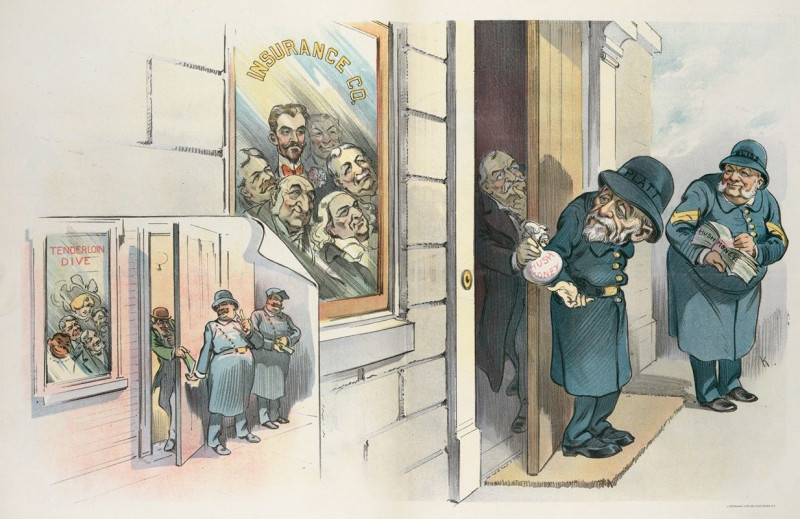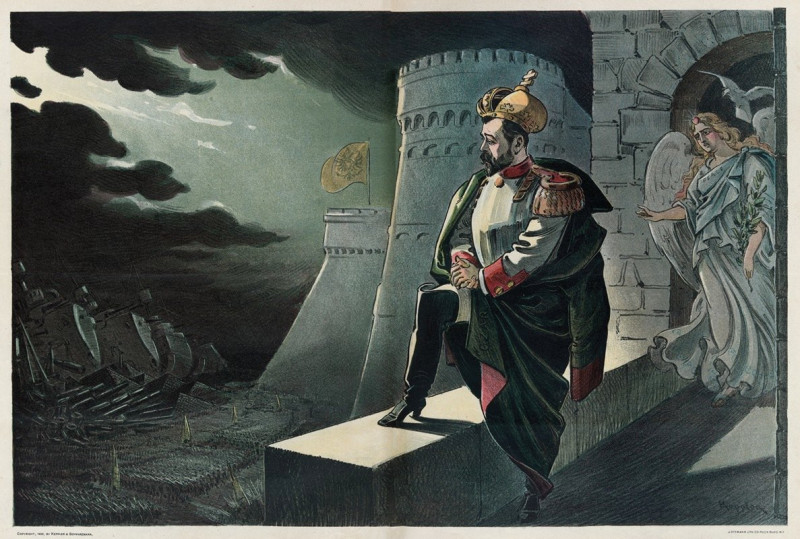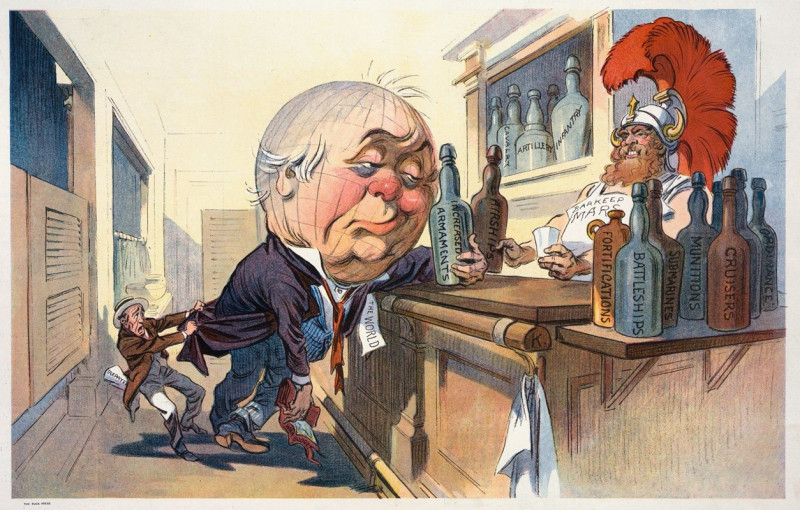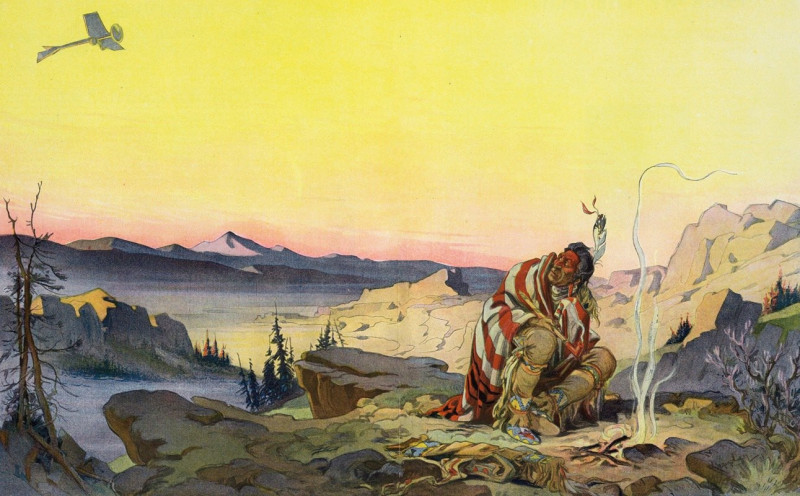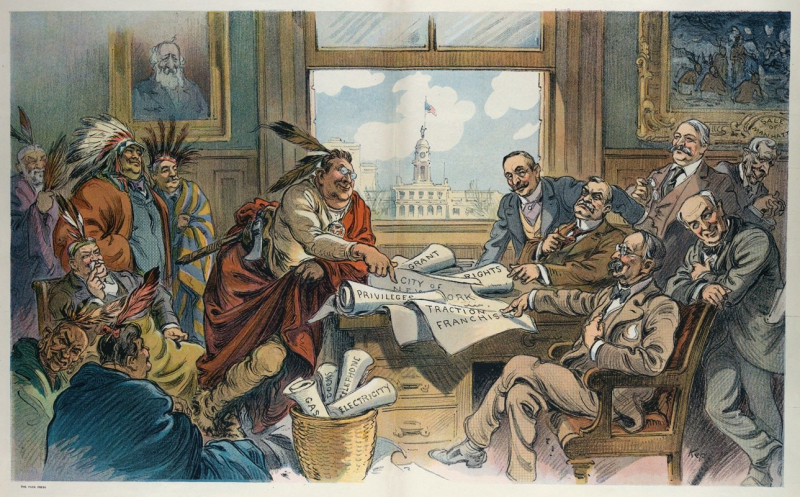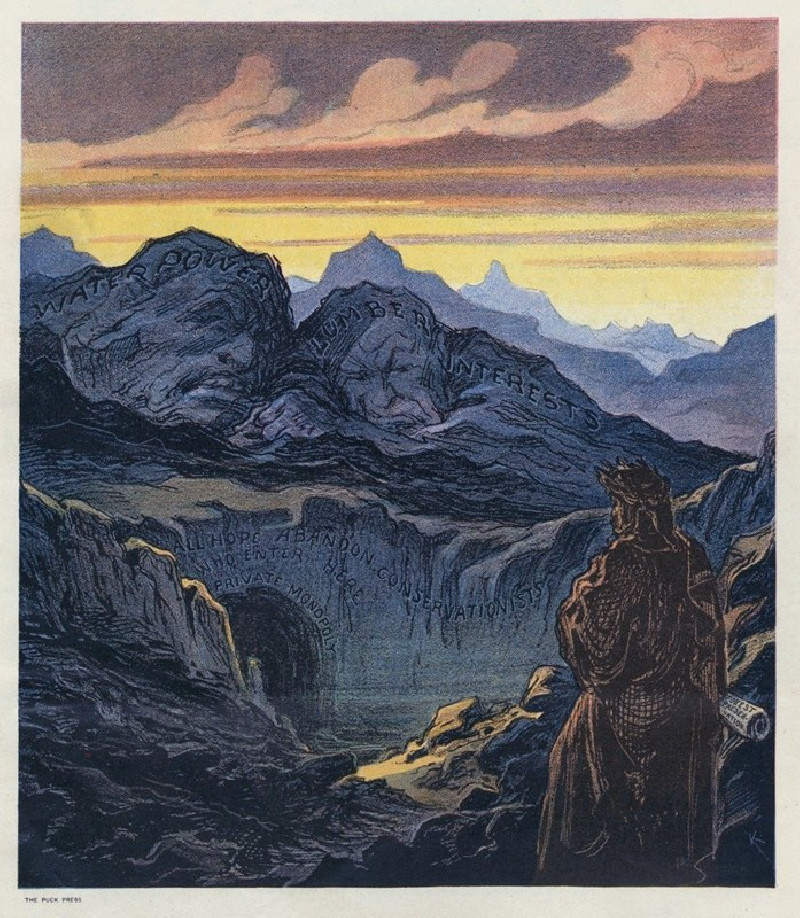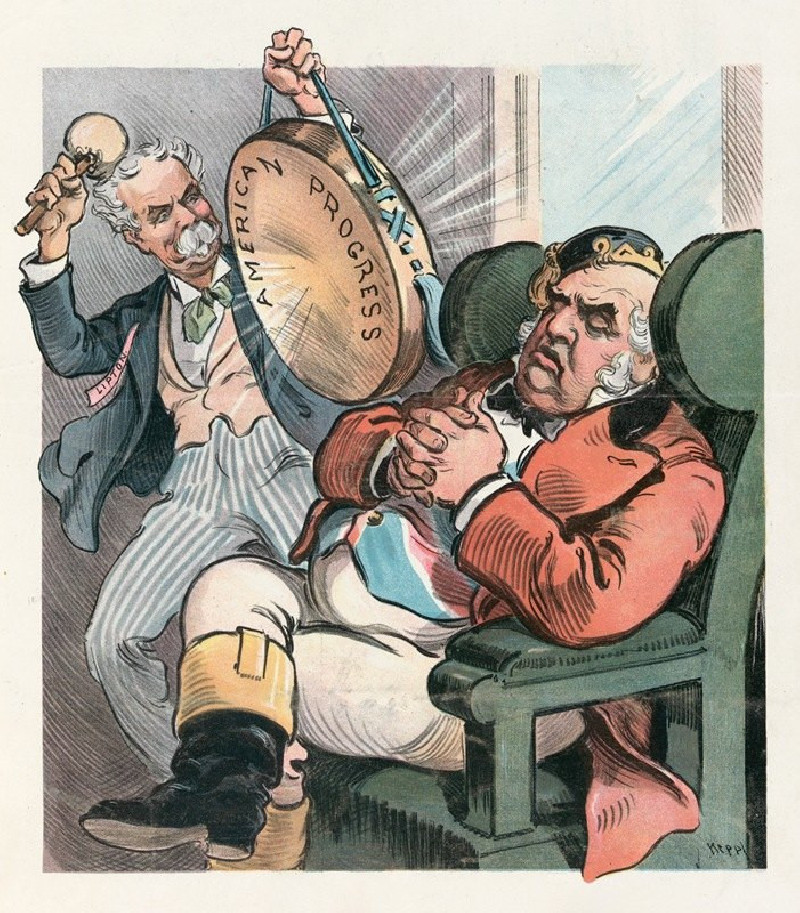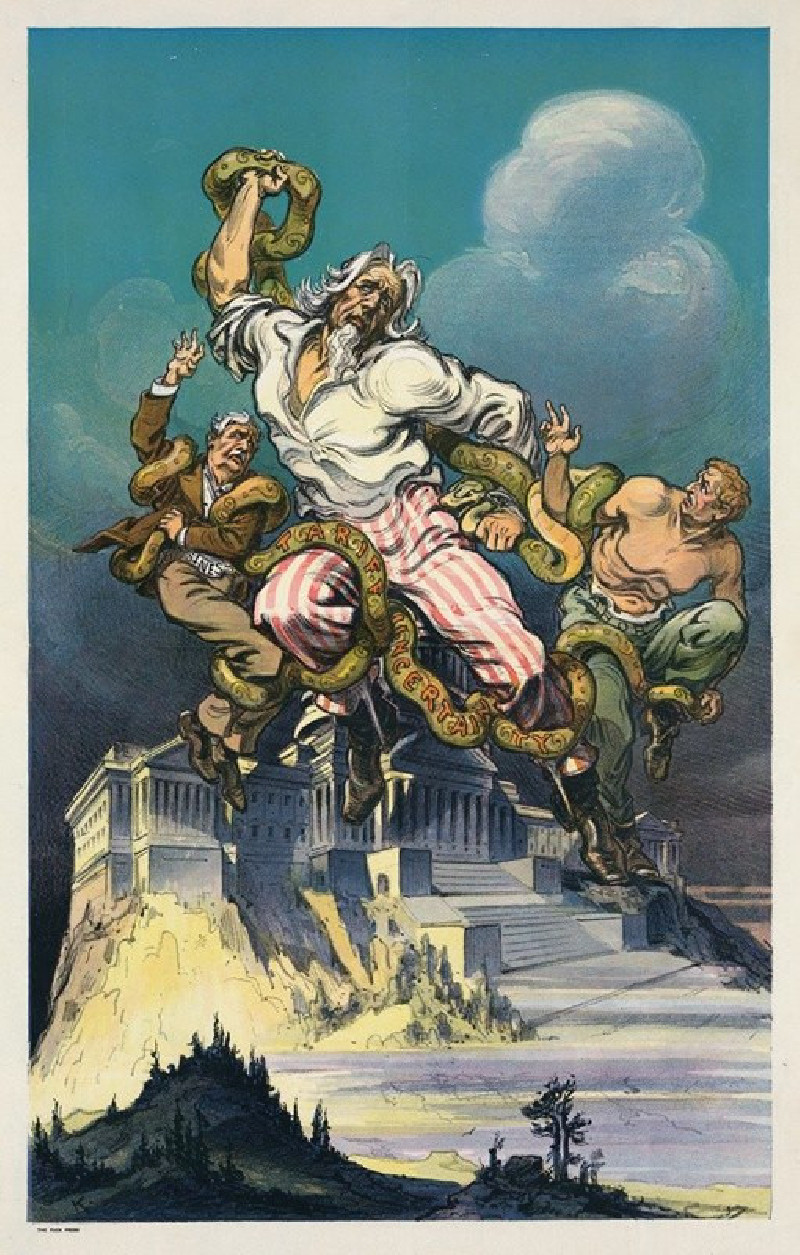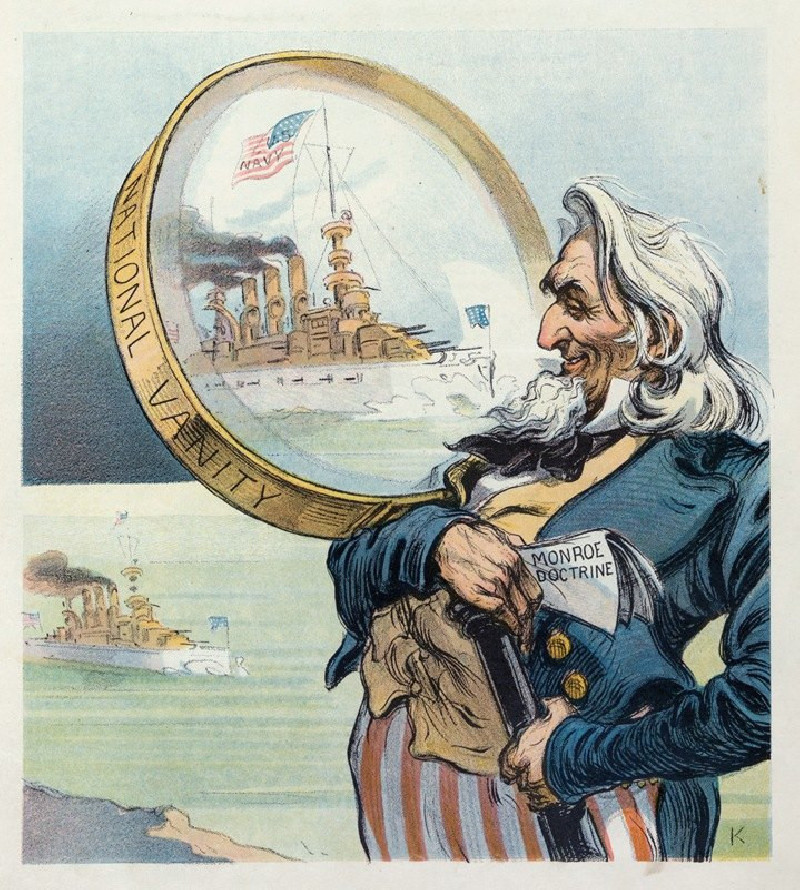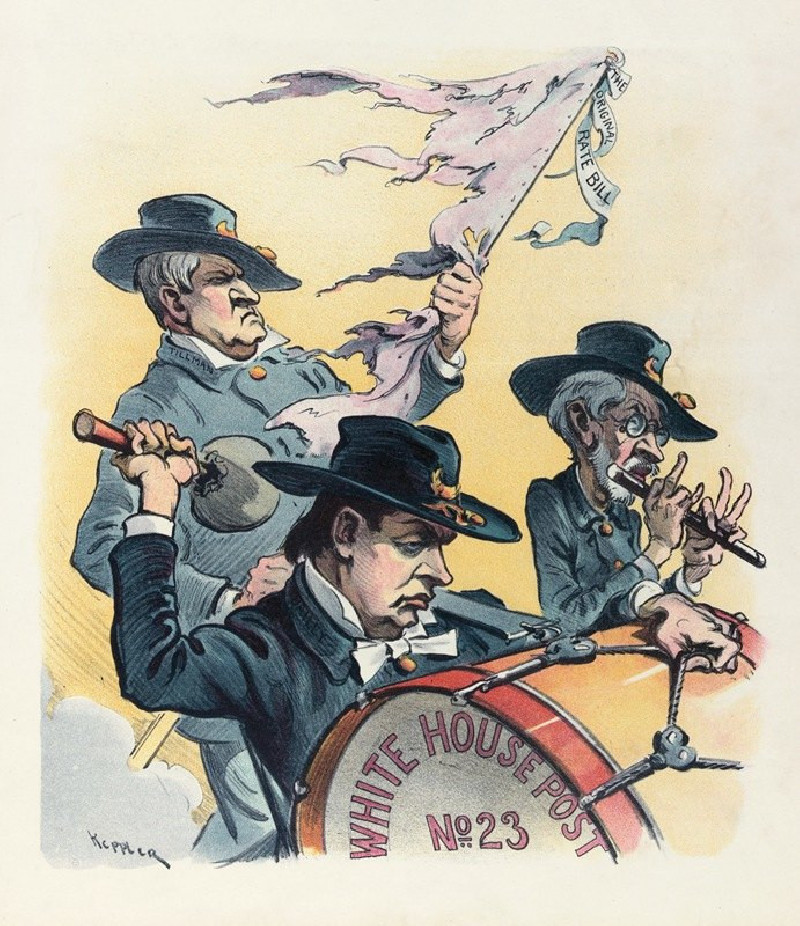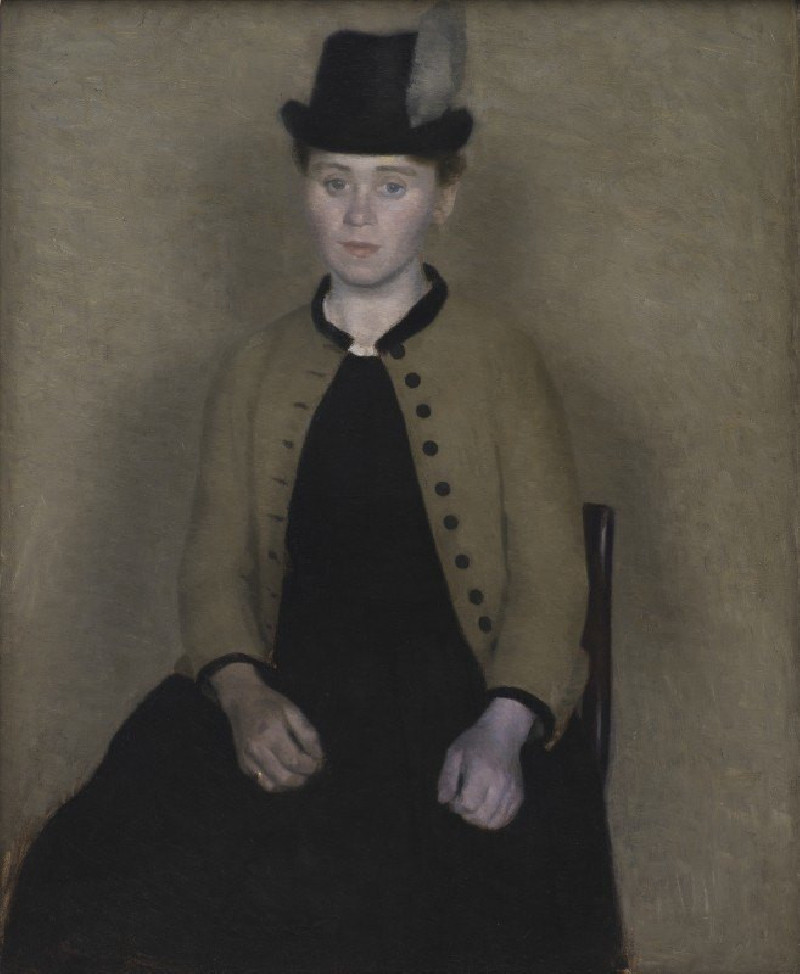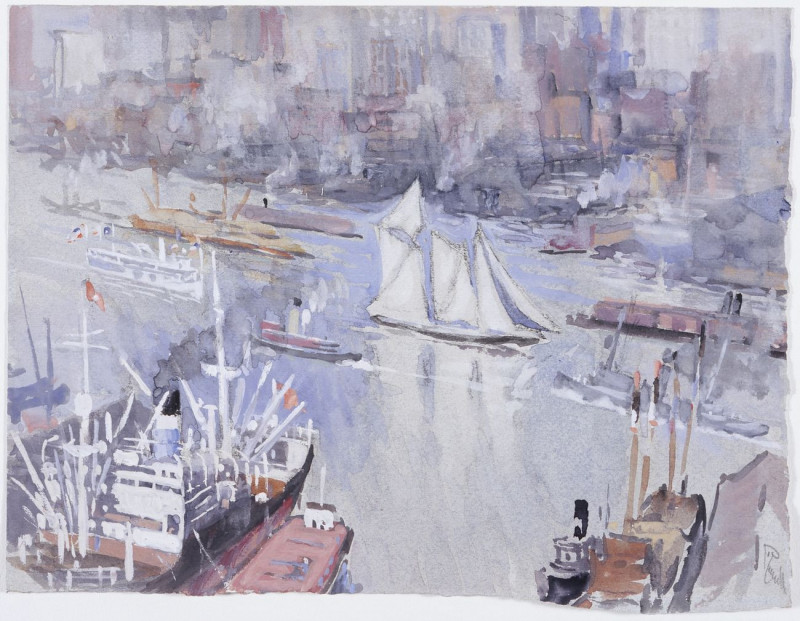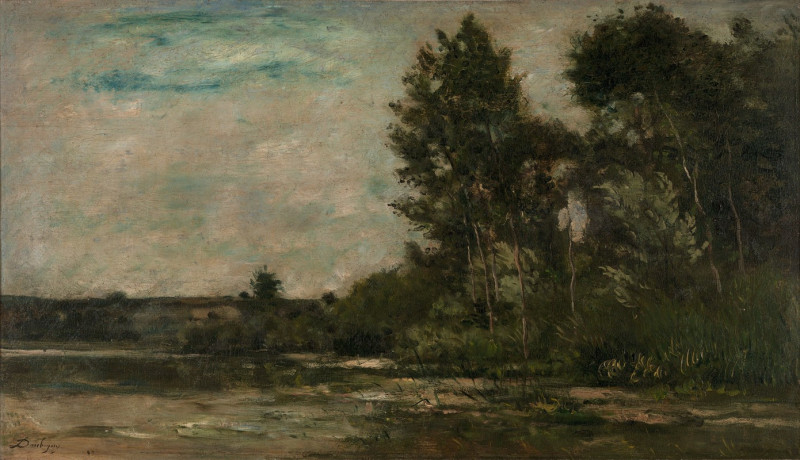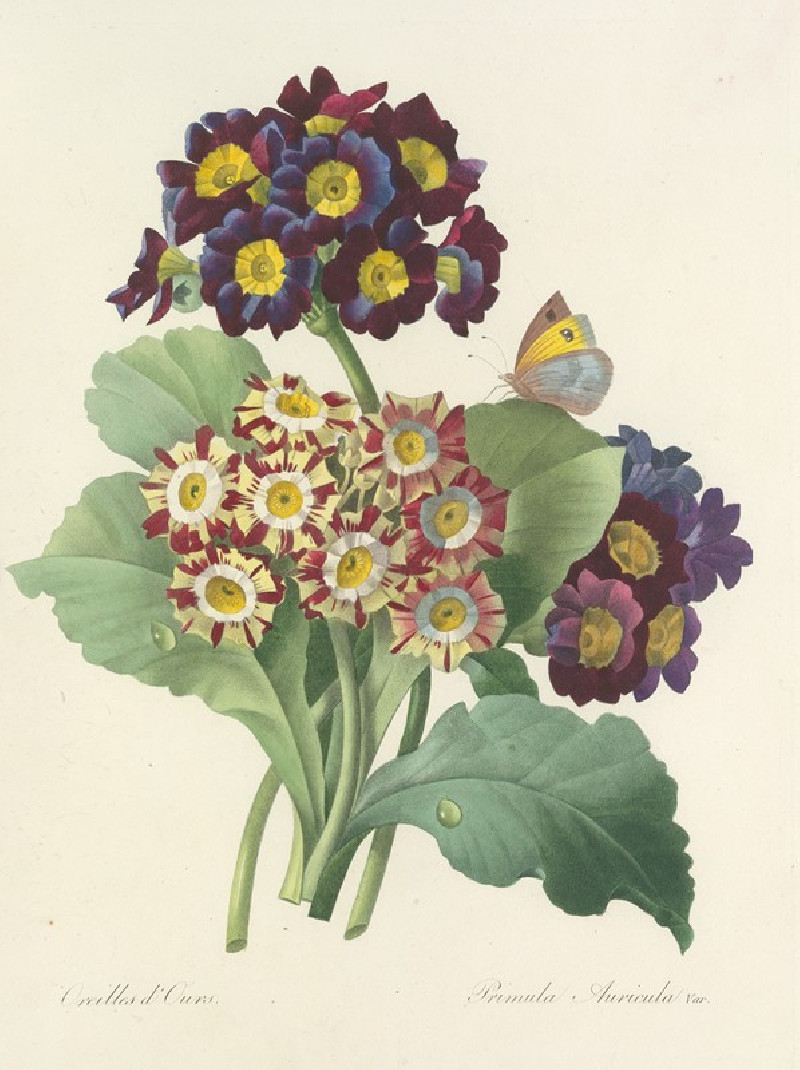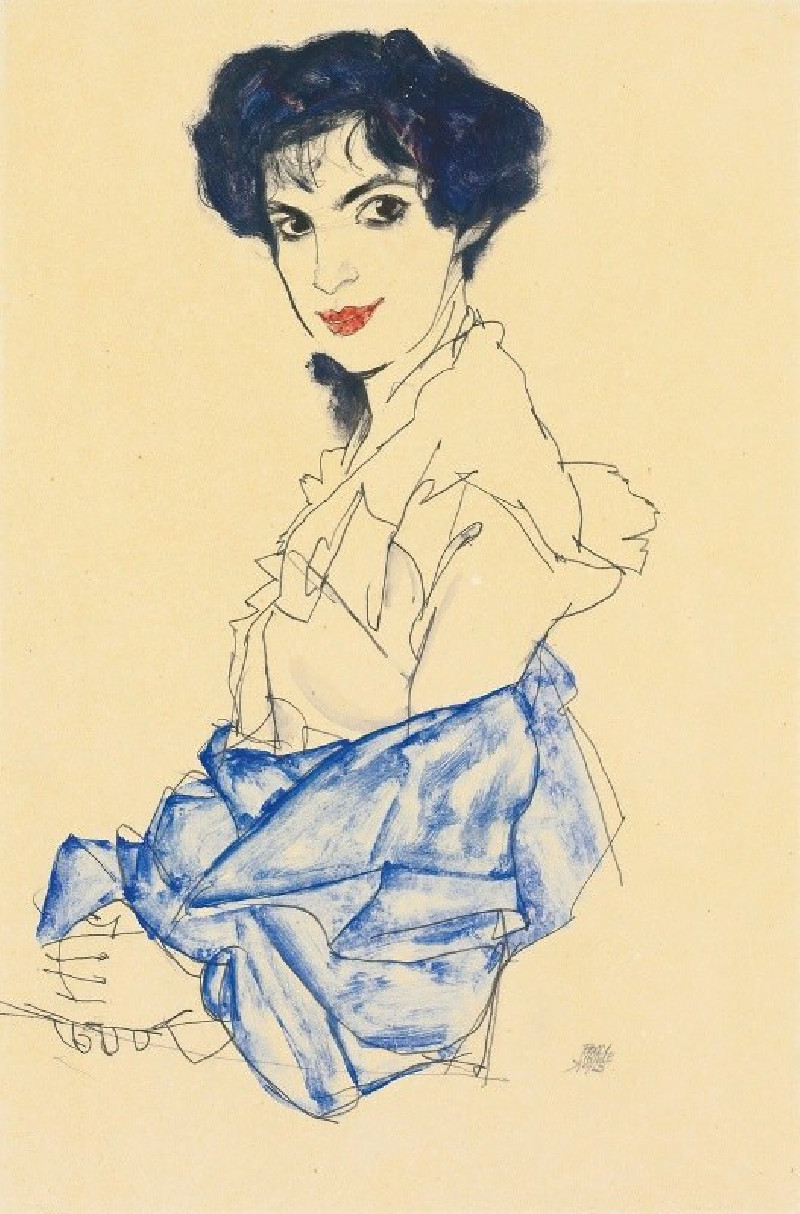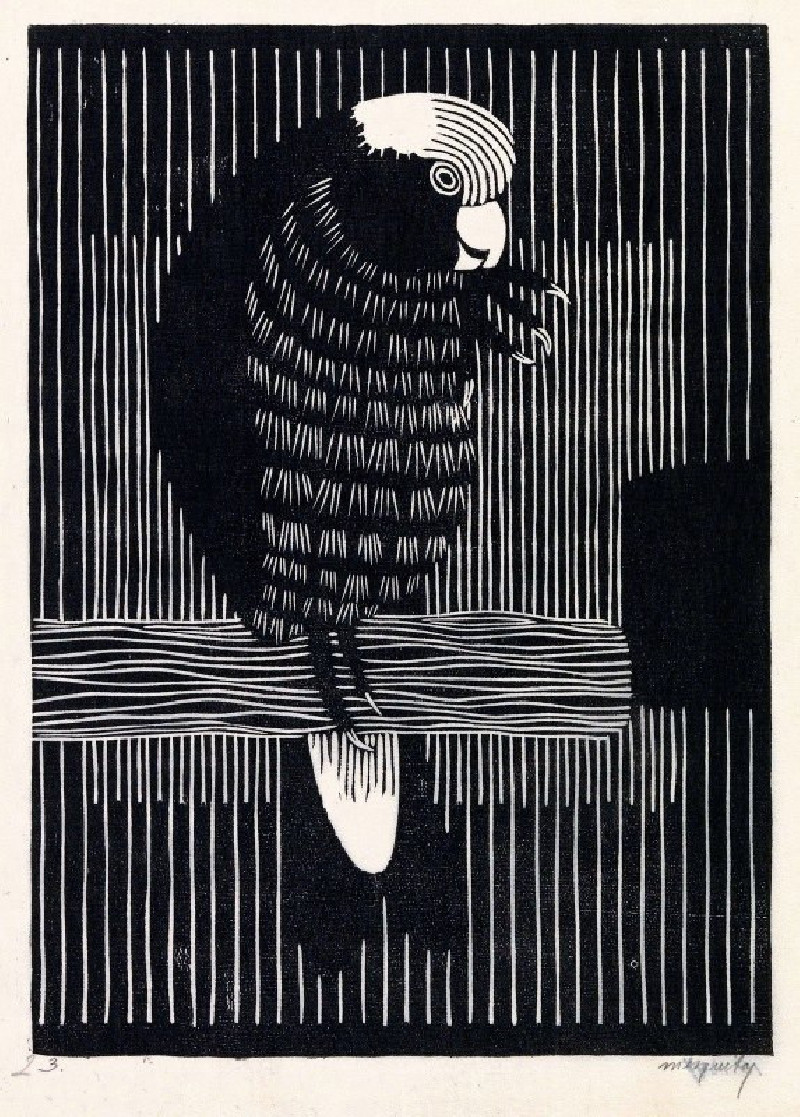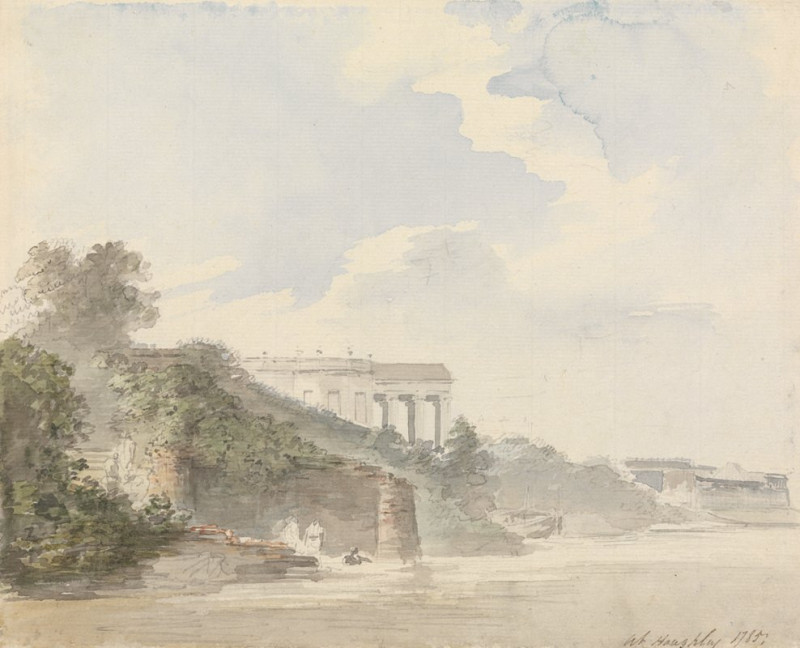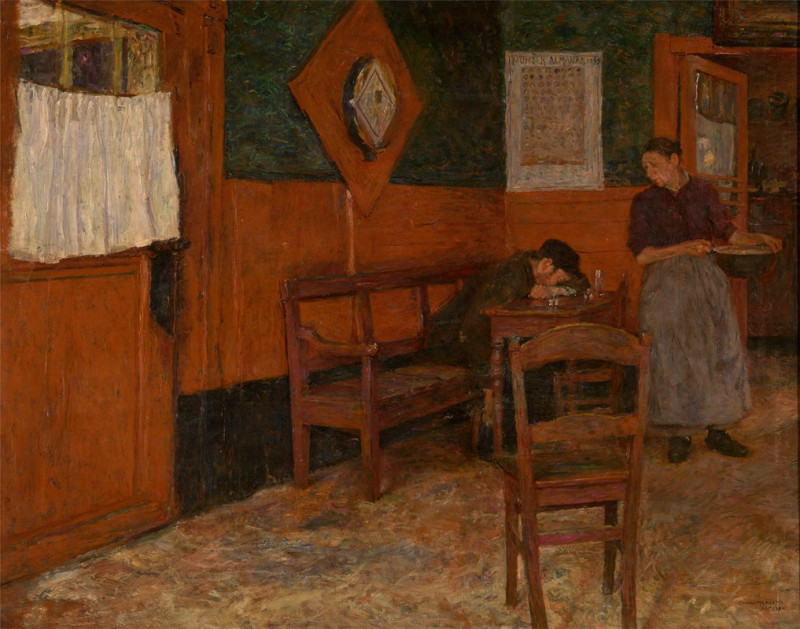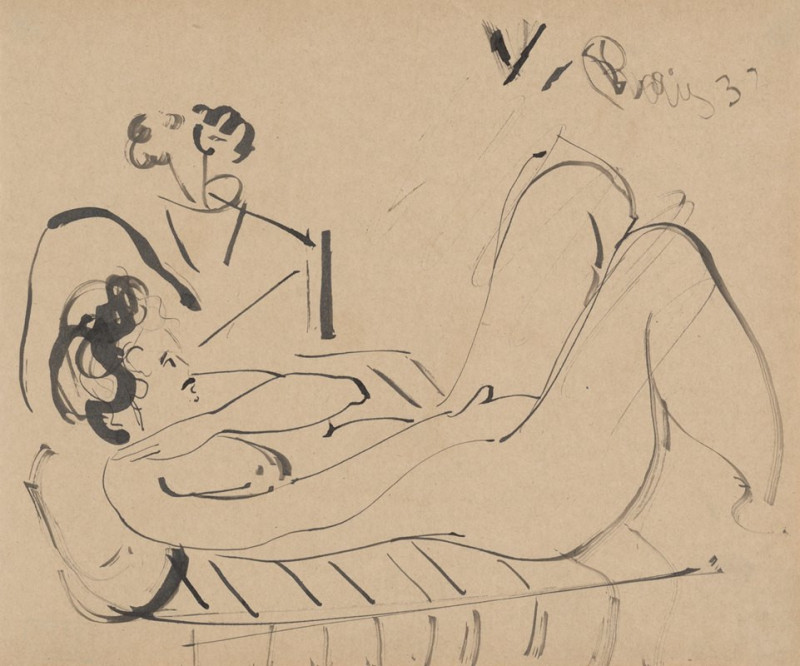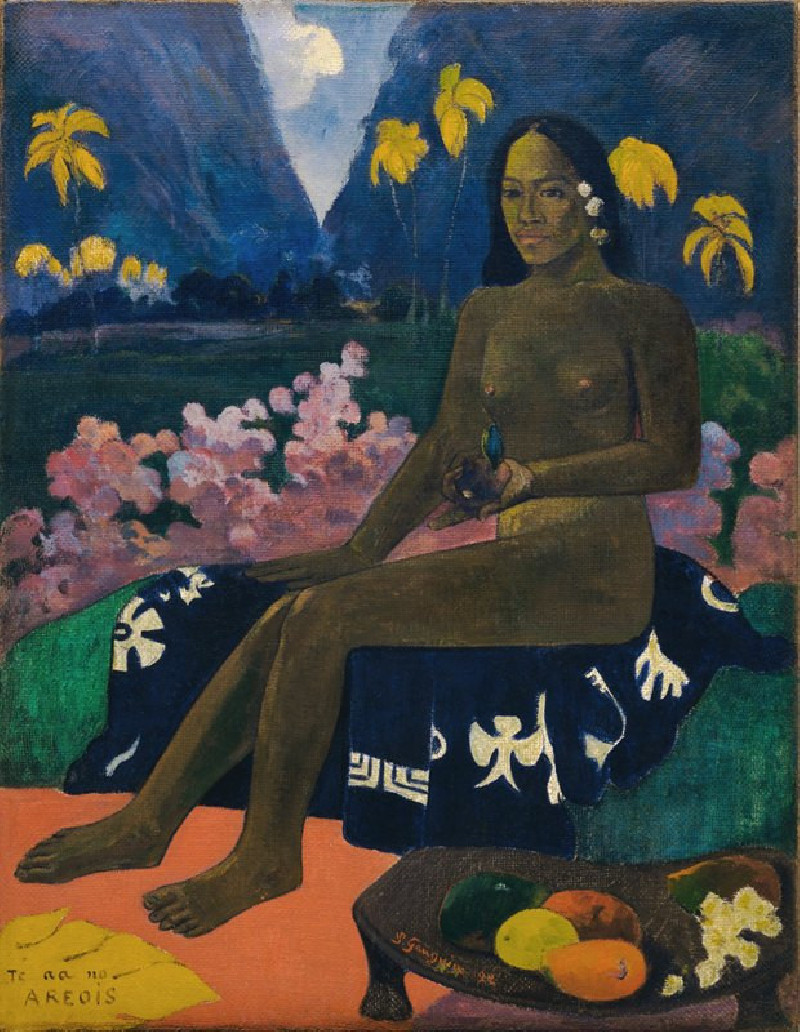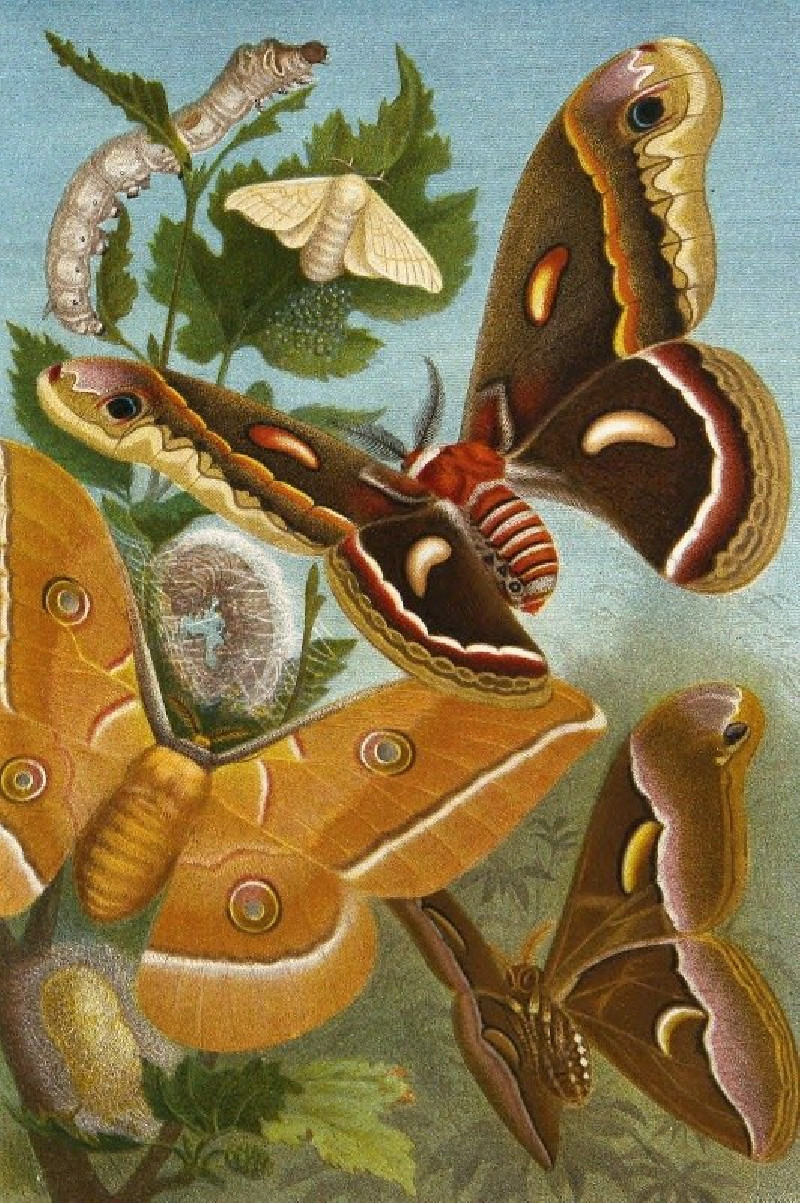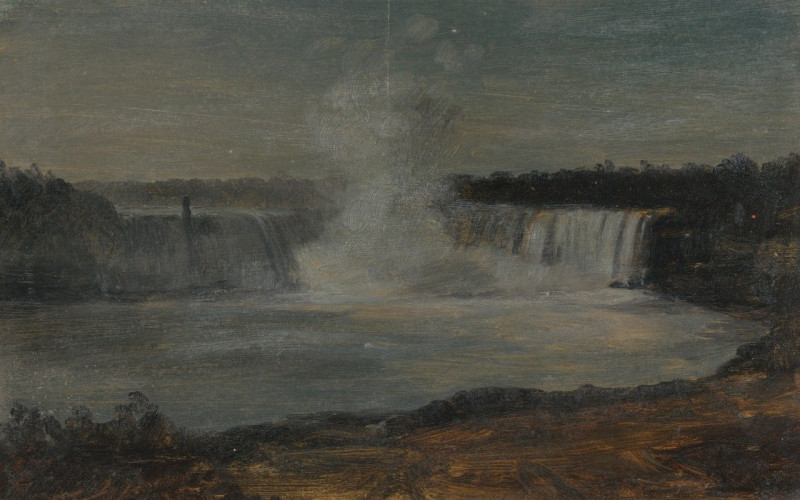The rival pulpiteers (1905)
Technique: Giclée quality print
Recommended by our customers
More about this artwork
Udo Keppler's 1905 painting, "The Rival Pulpiteers," serves as a vivid commentary on religious and political debates of its era, infused with a satirical edge that highlights the artist's critique of contemporary figures and ideologies.This colorful and dynamic piece depicts a chaotic scene within what appears to be a church. At the center, two groups of men passionately argue from their respective pulpits, which are humorously labeled with tags reading "Jeffersonian Simplicity" and "Jeffersonian Simplicity and Plain Dealing," suggesting a schism within a faction presumably united by common values attributed to Thomas Jefferson. Each figure expresses a manner exaggerated to appear almost cartoonish, enhancing the satire.Behind these fervent debaters stands a stained glass window portraying Thomas Jefferson himself, an indication of his symbolic importance to the disputants while possibly underscoring their deviation from his principles. The figures' animated expressions and aggressive gestures contribute to the painting's critique of hypocrisy or inconsistency in political or religious proclamations.Adding another layer to the depiction, a woman in the foreground dressed in an elaborate, colorful outfit, along with a bizarre creature beside her, suggests the introduction of foreign or unrelated elements into the scene, perhaps mocking the absurdity or corruption perceived by Keppler in the socio-political discourse.Incorporating rich colors and detailed imagery, Keppler not only captures a moment of heated debate but also offers a critical, humorous lens through which to view the politics of his time, emphasizing the divergence between professed ideals and actual behavior.
Delivery
Returns
Udo J. Keppler, since 1894. known as Joseph Keppler, Jr., was an American political cartoonist, publisher, and Native American advocate. The son of cartoonist Joseph Keppler (1838–1894), who founded Puck magazine, the younger Keppler also contributed to cartoons, and after his father's death became co-owner of the magazine under the name Joseph Keppler. He was also a collector of Native American artifacts.

